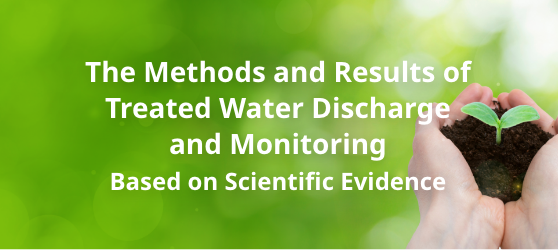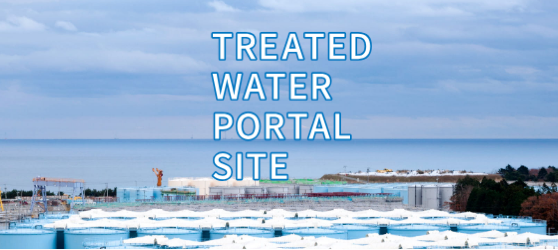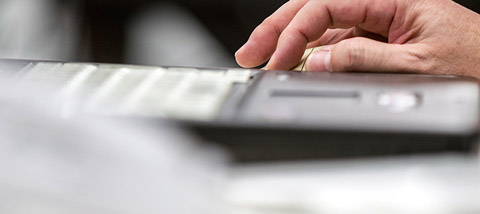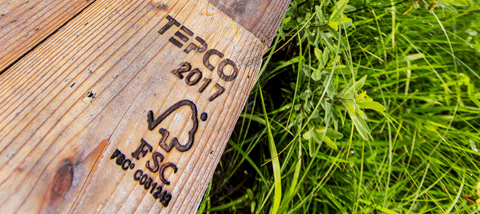Results of Radioactive Material Analysis in the Vicinity of the Fukushima Daiichi Nuclear Power Station
Daily measurement data and analysis results are announced, enabling the public including local communities to confirm radiation levels in the area.
Use of the data is explained here.
Results of radioactive material analysis at each collection point (for August 2020)
Air
Air at power station site
Radionuclide analysis is conducted of air collected inside the power station site.
Note:As of the samples collected August 30, 2017, gamma radionuclide analysis of dust collected at three monitoring points at the west gate and boundary of the site (MP-1, 3, 8), at three locations near Units 1 to 4 (north-side slope near Unit 1, west side slope near Units 1 and 2, west-side slope near Units 3 and 4), and on the ocean side of Units 1 to 4 was stopped, changing to observations by continuous dust monitors located inside the site.
For reference: See here for the status of dust monitor measurements near the Fukushima Daiichi Nuclear Power Station site boundary.
Note:also that air sampling for strontium and plutonium analysis, by means of a monitoring car located near the west gate of the site, continues to be conducted once every half year (April and October).
Seawater
| Seawater near power station | ||||||
|---|---|---|---|---|---|---|
| Sun. | Mon. | Tue. | Wed. | Thu. | Fri. | Sat. |
| 1 | ||||||
| 2 | 3 | 4 | 5 | 6 | 7 | 8 |
| 9 | 10 | 11 | 12 | 13 | 14 | 15 |
| 16 | 17 | 18 | 19 | 20 | 21 | 22 |
| 23 | 24 | 25 | 26 | 27 | 28 | 29 |
| 30 | 31 | |||||
Radionuclide analysis is conducted of seawater collected along the coast of the power station.
| Seawater near water intakes by Units 1 to 4 | ||||||
|---|---|---|---|---|---|---|
| Sun. | Mon. | Tue. | Wed. | Thu. | Fri. | Sat. |
| 1 | ||||||
| 2 | 3 | 4 | 5 | 6 | 7 | 8 |
| 9 | 10 | 11 | 12 | 13 | 14 | 15 |
| 16 | 17 | 18 | 19 | 20 | 21 | 22 |
| 23 | 24 | 25 | 26 | 27 | 28 | 29 |
| 30 | 31 | |||||
Radionuclide analysis is conducted of seawater collected near the water intakes of Units 1 to 4.
*Results of radionuclide analysis of seawater near power station and near water intakes of Units 1 to 4
Starting April 2, 2019, a change was made to where the seawater radionuclide analysis results are archived for the power station coastline and near the Unit 1 to 4 water intakes. Please see here. (Pages showing seawater analysis results in PDF files archived in the section headed “Monitoring on east side of Unit 1 to 4 turbine buildings and bay” )
Note that graphs and detailed analysis results from remeasuring, and analysis results for other collection points, continue to be archived as in the past.
Results of radionuclide analysis of seawater near south discharge outlets of Units 1 to 4
As of September 2018, a change was made to where the radionuclide analysis results are archived for seawater sampled near the south discharge outlets of Units 1 to 4. Please see here. (Pages showing seawater analysis results in PDF files archived in the section headed “Monitoring on east side of Unit 1 to 4 turbine buildings and bay”)
Seawater at bay entrance (measured by radioactivity monitors)
Starting October 1, 2016, data indicating the latest status in 10-minute intervals is made available in real time.
Subdrain water
| Subdrain water near turbine building | ||||||
|---|---|---|---|---|---|---|
| Sun. | Mon. | Tue. | Wed. | Thu. | Fri. | Sat. |
| 1 | ||||||
| 2 | 3 | 4 | 5 | 6 | 7 | 8 |
| 9 | 10 | 11 | 12 | 13 | 14 | 15 |
| 16 | 17 | 18 | 19 | 20 | 21 | 22 |
| 23 | 24 | 25 | 26 | 27 | 28 | 29 |
| 30 | 31 | |||||
Radionuclide analysis is conducted of radioactive materials in water collected from subdrains, etc. near the turbine buildings of Units 1 to 6.
| Subdrain water near the centralized waste treatment facility | ||||||
|---|---|---|---|---|---|---|
| Sun. | Mon. | Tue. | Wed. | Thu. | Fri. | Sat. |
| 1 | ||||||
| 2 | 3 | 4 | 5 | 6 | 7 | 8 |
| 9 | 10 | 11 | 12 | 13 | 14 | 15 |
| 16 | 17 | 18 | 19 | 20 | 21 | 22 |
| 23 | 24 | 25 | 26 | 27 | 28 | 29 |
| 30 | 31 | |||||
Radionuclide analysis is conducted of radioactive materials in water collected from the subdrain near the centralized waste treatment facility.
Subdrain and groundwater drain sampling
Groundwater near buildings is pumped up before it can enter the buildings (measure to minimize increase in contaminated water). Moreover, groundwater flowing toward the sea that has been dammed up by installing an ocean-side impermeable wall (measure to prevent contaminated water from leaking) is pumped up, cleaned, and checked for water quality before being discharged into the ocean, in a water treatment facility for subdrain, etc. that went into operation in September 2015. Groundwater that has been pumped up is stored in temporary storage tanks, radioactivity levels are measured, and confirmation is made that it is within operational targets.
To ensure objectivity of the analysis results, radiation level analysis is also conducted by third-party agencies.
| Cesium-134 | Cesium-137 | All beta | Strontium | Tritium | |
|---|---|---|---|---|---|
| Operational targets for temporary storage tanks | 1Bq/l | 1Bq/l | 3Bq/l | - | 1500Bq/l |
| (For reference) Regulatory limits | 60Bq/l | 90Bq/l | - | 30Bq/l | 60000Bq/l |
| WHO guidelines for drinking-water quality | 10Bq/l | 10Bq/l | - | 10Bq/l | 10000Bq/l |
An overview of subdrain initiatives and implementation status is given here.
| Transfer tank analysis results | |
|---|---|
|
The most recent data is from June 14, 2016. |
|
| Temporary storage tank and water collection tank analysis results | |
|---|---|
| 123456789101112131415161718192020(Detail)2122232425262728293031 | |
| Weighted average sample analysis results | |
|---|---|
| 20(As of June, 2020)24(In the first quarter of FY2020)
Note:Analysis is conducted on water collected before discharge after mixing in the same ratio as that of discharged water each time to all discharged water for that month. |
| Analysis results for discharged water | |
|---|---|
|
The most recent data is from June 15, 2020. |
|
Groundwater bypass-related sampling
As a measure for minimizing the increase in contaminated water, a groundwater bypass went into operation in May 2014, by which groundwater on the mountain side is pumped up before it can enter buildings and its water quality is confirmed before it is discharged into the ocean. Groundwater that has been pumped up is stored in temporary storage tanks, radiation levels are measured, and confirmation is made that it is within operational targets.
To ensure objectivity of the analysis results, radiation level analysis is also conducted by third-party agencies.
| Cesium-134 | Cesium-137 | All beta | Strontium | Tritium | |
|---|---|---|---|---|---|
| Operational targets for temporary storage tanks | 1Bq/l | 1Bq/l | 5Bq/l | - | 1500Bq/l |
| (For reference) Regulatory limits | 60Bq/l | 90Bq/l | - | 30Bq/l | 60000Bq/l |
| WHO guidelines for drinking-water quality | 10Bq/l | 10Bq/l | - | 10Bq/l | 10000Bq/l |
An overview of the groundwater bypass initiative and implementation status is given here, along with related materials.
| Pumping well analysis results | |
|---|---|
| 145812151919(2)22252629 | |
| Temporary storage tank analysis results | |
|---|---|
| 512192626(Detail) | |
| Weighted average sample analysis results | |
|---|---|
| 26(As of June, 2020) | |
| Analysis results for discharged water | |
|---|---|
|
The most recent data is from June 15, 2020. |
|
Monitoring for tank leakage
In response to leakage from a bottom flange of Tank No. 5 in the I group of the H4 tank area discovered in August 2013, dripping from an upper top plate of a B south area tank (B-A5) occurring in October 2013, and leakage from a flange of an upper top plate of the C1 tank in the H6 tank area occurring in February 2014, ongoing sampling has been implemented to monitor the effects of such leakage. This sampling is conducted near the south discharge outlets of the Fukushima Daiichi Nuclear Power Station, the discharge channels on the site premises, and around the H4 area tanks.
| South discharge outlets and discharge channels |
|---|
|
Note:Starting September 2018, a change was made to where the analysis results are archived for the south discharge outlets and discharge channels. |
| Observation holes around the H4 tank area | |
|---|---|
| 613(See Highest Does)2027 | |
| Observation holes around the H6 tank area | |
|---|---|
| 6132027 | |
Sampling of sprinkled water that has been treated in rainwater treatment equipment after being dammed in tank area
Rainwater dammed in the tank area, after being treated using the reverse osmosis (RO) desalination and other systems, since May 2014 has been sprinkled on the premises of the Fukushima Daiichi Nuclear Power Station. To confirm the impact of this sprinkling, levels of radioactive materials in the treated water (sprinkled water) and in the air at the sprinkling locations, and the surrounding air dose rates, are analyzed.
|
The most recent data is from June 14, 2016. |
Monitoring on east side of Unit 1 to 4 turbine buildings and bay
Radionuclide analysis is conducted of groundwater on the east side of Unit 1 to 4 turbine buildings and of seawater in the bay, for confirming sources of radioactive materials in groundwater and their diffusion status, and for monitoring impact on the ocean.
| 1234(See Highest Does)5678910111213(See Highest Does)141516171819(See Highest Does)202122(See Highest Does)232425262728293031 | |
| CSV data [for and priot to August 2020] | Seawater, Groundwater( North of Unit 1 , Between Unit 1 and 2 water intakes , Between Unit 2 and 3 water intakes, Between Unit 3 and 4 water intakes) |
Detailed analysis results of groundwater around Unit 1 to 4 buildings
In purification testing of wells (subdrain pits) adjacent to Unit 1 to 4 buildings, radioactive materials were detected in water accumulated in the pits. Given the possibility that the source of this radiation is from fallout, new observation pits were installed near Unit 1 to 4 buildings, and fallout is being monitored.
| The most recent data is from October 1, 2014. |
Sampling data from discharge channels on the premises of the Fukushima Daiichi Nuclear Power Station
Monitoring of each of the discharge channels continues, since rainwater flows into the channels after falling on the turbine building roofs, which were contaminated by fallout at the time of the accident.
| 12345678910111213141516171819202122232425262728293031 | |
Analysis results for underground reservoirs
In response to the external leaking of water stored in an underground reservoir, occurring in April 2013, impact on the surroundings is being monitored, analyzing groundwater at leak detection holes installed next to the reservoirs and observation holes around them.
Note that the amount of underground reservoir leakage was thereafter assessed to be around 20 to 30 liters.
- August 26, 2020
- Tritium Analysis Results of the Underground Bypass (Investigation Holes/Pumping Well) and the Sea Side Observation Holes (As of August 24)
- August 25, 2020
- Nuclide Analysis Results of the Underground Bypass (Investigation Holes/Pumping Well) and the Sea Side Observation Holes (As of August 24)
- August 19, 2020
- Tritium Analysis Results of the Underground Bypass (Investigation Holes/Pumping Well) and the Sea Side Observation Holes (As of August 17)
- August 18, 2020
- Nuclide Analysis Results of the Underground Bypass (Investigation Holes/Pumping Well) and the Sea Side Observation Holes (As of August 17)
- August 12, 2020
- Tritium Analysis Results of the Underground Bypass (Investigation Holes/Pumping Well) and the Sea Side Observation Holes (As of August 10)
Other
- August 28, 2020
- in the ocean soil off the coast
- August 20, 2020
- Seawater collected in offshore area of Ibaraki Prefecture
- August 13, 2020
- in the ocean soil off the coast
- August 7, 2020
- Seawater collected in offshore area of Miyagi Prefecture
English Form
- in the soil
- in the ocean soil off the coast
- Seawater collected in offshore area of Ibaraki Prefecture / Miyagi Prefecture
- Unit 1 discharge channel
- Underground Water around Unit 2 Reactor Building
- the Radioactive materials in the fallouts
- the Radioactive Materials in the Air at the Upper Part of Reactor Building (Units 1,3,4)
- the Radioactive Materials in the Air at the Exhaust Facility of Unit 2 Reactor Building
- Gas Sampling Results of PCV Gas Control System (Units 1-3)
- the Radioactive Materials in the Air at the Opening of Buildings
- K Drainage Outlet
- Sampling Results of Drainage Water at Fukushima Daiichi Nuclear Power Station
Water Treatment Equipment Analysis Results
| 1728 |
Fish and Shellfish Analysis Results
(waters within 20km of Fukushima Daiichi Nuclear Power Station)
At the time of the accident, high-level radioactive contamination from the basement of the turbine buildings flowed into the bay via underground trenches and other routes. In response, analysis of fish and shellfish collected from the bay and other waters within 20km of the power station is carried out to confirm the impact on the fish and shellfish and its progression.
Data for Analysis Results of Fish and Shellfish are posted monthly as “News Release” and you could fine the latest version here.
















